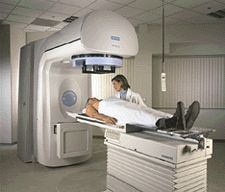Many people with cancer want to learn all they can about their disease and their treatment options, so they can take an active part in decisions about their medical care. Often, it helps to make a list of questions to ask the doctor. Some patients have a family member or friend with them when they talk to the doctors, to take part in the discussion or to just listen.
Some issues a patient may want to discuss with their doctor regarding their diagnosis and treatment include:
- What is my diagnosis?
- What is the stage of the disease?
- What are my treatment choices?
- What are the risks and possible side effects of each treatment?
- How long will the treatment last?
- Will I have to change my normal activities?
- What is the treatment likely to cost?
There are many methods of cancer treatment and several are described below. In some cases, two or mores type of treatment will be used together to battle the cancer. Doctors who specialize in cancer detection and treatment are called oncologists.
Surgery: Surgery is local treatment to remove the tumor. Tissue around the tumor and nearby lymph nodes may also be removed during the operation. The extent of the surgery will depend upon the age and stage of the cancer, the extent to which it has grown and spread, and which type of cancer is present.
Chemotherapy: Treatment with certain drugs to kill cancer cells is called chemotherapy. Most anticancer drugs are injected into the vein (intravenous, IV) or a muscle; some are given by mouth. Chemotherapy is systemic treatment, meaning that the drugs flow through the bloodstream to nearly every part of the body.
Often, patients who need many doses of IV chemotherapy receive the drug through a catheter (a thin flexible tube). One end of the catheter is placed in a large vein in the chest. The other end is outside of the body or attached to a device just under the skin. Anticancer drugs are given through this catheter. This can make chemotherapy ("chemo" for short) more comfortable for the patient. For some types of cancer, doctors are studying whether it is beneficial to deliver the anticancer drugs directly to the affected area. Chemotherapy is generally given in cycles: a treatment period is followed by a recovery period, and so on. Usually a patient has chemotherapy on an outpatient basis. However, depending on which drugs are given and the patient's general health, the patient may need to stay in the hospital for a short time.
Hormone Therapy: Some types of cancer, including most breast and prostate cancers, depend upon hormones to grow. For this reason, doctors may recommend therapy that prevents cancer cells from getting the hormones they need. Sometimes, the patient has surgery to remove organs (such as ovaries or testicles) that make certain hormones; in other cases, the doctor uses drugs to stop hormone production or change the way hormones work. Like chemotherapy, hormone therapy is a systemic treatment; it affects cells throughout the body.
Biological Therapy: Biological Therapy (also called immunotherapy) is a form of treatment that uses the body's natural ability (immune system) to fight infection and disease or to protect the body from some of the side affects of treatment. Monoclonal antibodies, interferon, interleukin-2 (IL-2) and several types of colony-stimulating factors (CSF, GM-CSF, G0CSF) are forms of biological therapy.
 |
| The patient is positioned and consulted by the technologist prior to radiation therapy. The "upside down L" device is a linear accelerator and delivers high energy rays directly to the tumor from many angles. |
Radiation therapy (also called radiotherapy) is an important tool in the fight against cancer and is used in the treatment of as many as 50% of all cancer patients. In excess of half a million cancer patients receive radiation therapy each year, either alone or in conjunction with surgery, chemotherapy or other forms of cancer therapy. Radiation therapy is especially useful in cases where surgical removal of the cancer is impossible or might debilitate the patient (for example, tumors that are located close to the spinal cord). Together with image guided treatment planning, radiation therapy is becoming ever more powerful in the elimination of cancer, especially when it is detected at an early stage.



